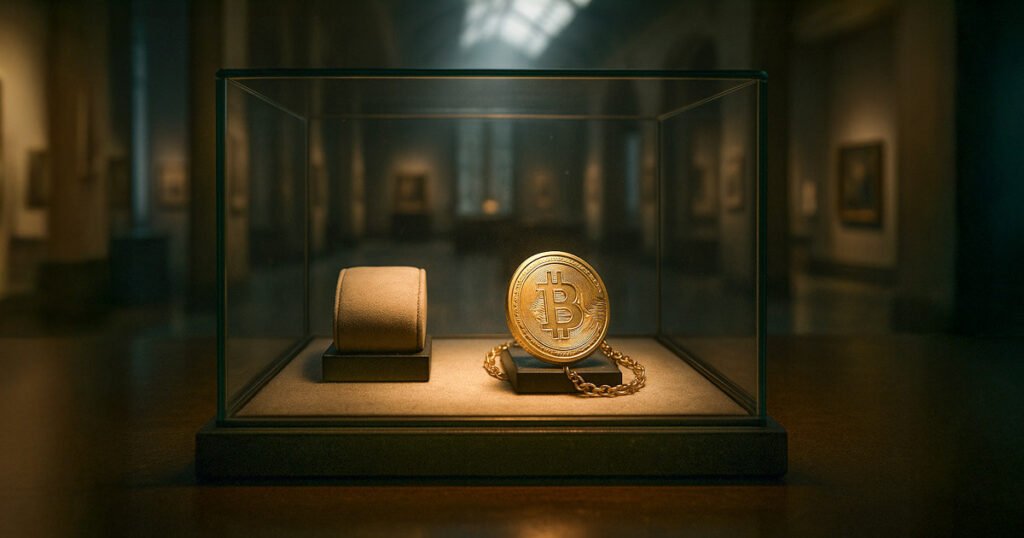The Evolution of Bitcoin and Luxury Goods: A New Era in Cryptocurrency Investment
In the thrilling world of cryptocurrency, the past few years have seen remarkable transformations. Just a short while ago, the pulse of the crypto market could be gauged by the waitlists at luxury watch retailers, reflecting the correlation between Bitcoin prices and high-end collectible timepieces. During the bull run from 2020 to 2022, when Bitcoin surged to an astounding $69,000, luxury watches, particularly models like the Nautilus 5711, skyrocketed in value. Secondary markets witnessed this timepiece trading for over $240,000, illustrating an intriguing parallel between crypto gains and status symbols. However, as we step into mid-2025, despite Bitcoin achieving new heights, the luxury goods market remains stagnant.
This phenomenon, described as the "great decoupling," reveals that Bitcoin’s significant gains are not mirroring the luxury watch or automotive markets. The wealth generated in crypto during the bull run seems to have shifted its focus, gravitating towards more strategic assets. As institutional investors enter the cryptocurrency space, spurred by the introduction of Bitcoin ETFs, the demographics of crypto stakeholders are changing. Today’s investors, including pension funds and family offices, prioritize long-term asset growth over speculative trades. Consequently, the nostalgia of flaunting wealth through luxury purchases like Rolexes is fading, replaced by a more risk-averse approach that resonates with portfolio diversification.
The maturation of the cryptocurrency market plays a crucial role in this decoupling. Bitcoin’s evolution from a high-risk quick-profit schema to a strategic asset emphasizes its core values of scarcity and security. This transition denotes a significant shift in how investors view crypto gains. Instead of channeling profits into luxury watches, assets are increasingly funneled into more secure choices such as multi-signature wallets and validator nodes. There’s a broader recognition that luxury items, although still culturally significant, are no longer the primary focus for crypto profits. This cultural and symbolic shift highlights the sector’s maturation, suggesting that the previous era of flaunting wealth via luxury goods has come to an end.
Another critical factor influencing this decoupling is the prevailing macroeconomic landscape. With central banks navigating ongoing rate policies and persistent inflation, liquidity has become a premium asset. In this climate, discretionary spending on luxury goods takes a hit. Instead, investors are turning their attention to long-term value stores, where Bitcoin has solidified its place in the financial ecosystem. This change necessitates an evolution in centralized exchanges, which are adapting as long-term strategy platforms that emphasize compliance and integrated ecosystems for a sustainable future.
This evolving narrative has led to a new alignment emerging between Bitcoin and traditional assets. The long-standing metaphor of Bitcoin as "digital gold" is beginning to manifest in practice, as seen in its correlation with the S&P/TSX Global Gold Index. As Bitcoin starts to demonstrate behavior more akin to safe-haven assets rather than speculative tech stocks, it reinforces crypto’s role as a resilient investment option. This shift has far-reaching implications for wealth managers and institutional investors, as they must craft strategies that recognize Bitcoin’s emerging status as a reliable asset.
As market narratives evolve, so does investor behavior. The decoupling trend hints at a transition towards responsible growth within the cryptocurrency market. No longer are assets viewed solely through the lens of immediate profit but as part of a broader investment strategy. The industry must now adapt to this transformation by emphasizing long-term sustainability and empowering users to appreciate digital assets as viable components of financial portfolios. The exuberance of the past—characterized by luxury showcases and extravagant purchases—may be fading, but the future of finance, grounded in responsible asset management and strategic investments, is just beginning.
In conclusion, the relationship between Bitcoin and luxury goods is undergoing a significant transformation. The market is diligently evolving as investor priorities shift towards strategic financial management rather than status symbols. This decoupling represents a pivotal moment in the cryptocurrency journey, paving the way for a more mature market focused on sustainable growth and long-term value retention. As the landscape of digital assets continues to expand, the future of finance is ripe with opportunities for responsible investors looking to navigate this new era.

















